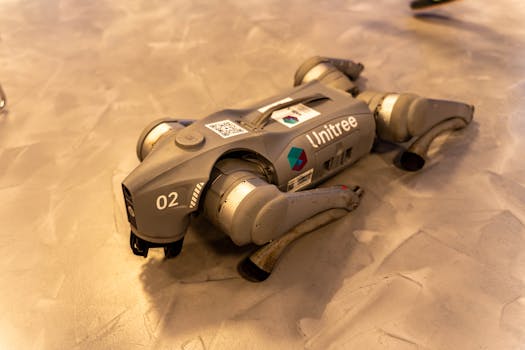Unleash the Gears: Your Ultimate D&D 5e Automaton Stat Block Guide
Introduction
Ever felt the urge to populate your Dungeons & Dragons 5th Edition world with something beyond flesh and blood? Do your players crave encounters with intricate clockwork soldiers, lumbering mechanical guardians, or even sentient magical constructs? If you’re nodding along, then you’ve come to the right place! Crafting unique creatures is a hallmark of a memorable D&D campaign, and automatons offer a fantastic opportunity to add a distinct flavor. However, translating the concept of a soulless machine into a playable stat block can feel a bit daunting. This guide will equip you with the knowledge and tools to build your very own D&D 5e automaton stat block, ensuring your mechanical marvels are as engaging as they are formidable. We’ll dive into the core components, explore design considerations, and look at practical examples to get your gears turning.
Section 1 – Understanding the Essence of an Automaton in D&D 5e
What exactly *is* an automaton in the context of D&D 5e? Think of them as constructs, animated by magic or intricate mechanisms rather than biological life. They are often mindless, following programmed directives, but some might possess rudimentary sentience or be imbued with powerful elemental or arcane energy. This distinction is crucial when designing your D&D 5e automaton stat block.
Unlike living creatures, automatons don’t typically need to eat, sleep, or breathe. Their motivations are usually external – a command, a protective protocol, or a magical imperative. This makes them excellent antagonists or even neutral parties in your adventures. The appeal of automatons lies in their alien nature, their predictable yet powerful movements, and the sheer variety of forms they can take, from tiny clockwork spiders to colossal war golems. Understanding this core concept helps us build a D&D 5e automaton stat block that feels authentic to its mechanical nature.
Section 2 – Deconstructing the D&D 5e Automaton Stat Block
Creating a compelling D&D 5e automaton stat block involves understanding and adapting the standard stat block format to suit their unique characteristics. Let’s break down the key elements and how they apply to our mechanical friends:
- Armor Class (AC): Automatons often have natural armor derived from their metallic or hardened casing. Consider their construction material. A polished steel automaton might have a higher AC than one made of crude iron. Heavy plating means higher AC.
- Hit Points (HP): While they don’t feel pain like living creatures, they can still be damaged. Their HP should reflect their size and the durability of their components. Think of HP as the resilience of their frame and internal mechanisms.
- Speed: Most automatons have a standard walking speed, but some might have unique movement options like flying (via propellers), burrowing (with drills), or even limited teleportation. Don’t forget specialized movement like climbing or swimming if their design warrants it.
- Ability Scores: This is where the mechanical nature shines.
- Strength (STR): Often high, reflecting the power of gears and actuators.
- Dexterity (DEX): Can be low if they are clunky, or surprisingly high if they are finely tuned.
- Constitution (CON): While they don’t have biological organs, CON can represent their structural integrity and resilience to damage.
- Intelligence (INT): Typically low for mindless constructs, but can be high for more advanced or sentient automatons.
- Wisdom (WIS): Similar to INT, usually low unless they possess programmed instincts or rudimentary awareness.
- Charisma (CHA): Almost always low, as they lack personality and emotion.
- Damage Resistances, Immunities, and Vulnerabilities: This is a critical area for automatons.
- Resistances: Often resistant to poison and psychic damage, as they lack biological systems. They might also be resistant to nonmagical bludgeoning, piercing, and slashing damage if they are heavily armored.
- Immunities: Immunity to poison and exhaustion is common. They are also immune to being charmed, frightened, or paralyzed by conventional means.
- Vulnerabilities: Common vulnerabilities include lightning damage (short circuits!) or thunder damage (disrupting internal mechanisms). Some may also be vulnerable to adamantine weapons or specific types of magical damage.
- Senses: Darkvision is almost a given. Some might have tremor sense or superior darkvision. Their “perception” is often based on internal sensors.
- Languages: Usually none, or perhaps they understand a specific command language.
- Challenge Rating (CR): This will depend on their overall power, offensive capabilities, and defensive traits.
- Traits:
- Immutable Form: They are immune to polymorph effects and similar transformations.
- Magic Resistance: Many constructs have advantage on saving throws against spells and other magical effects.
- Mechanical Nature: They don’t require air, food, drink, or sleep.
- Limited Magic Immunity/Resistance: Some might be immune to spells that target emotions or mental states.
- Specific Overrides: You might create traits like “Clockwork Precision” for advantage on certain rolls or “Armored Plating” for damage reduction.
- Actions: This is where their combat capabilities are defined.
- Multiattack: Many automatons can make multiple attacks per turn.
- Melee and Ranged Attacks: Think about their weapon integration – integrated claws, hammers, or projectile launchers.
- Special Actions: This is where you can get creative. Options include:
- Overdrive: A temporary boost to attack or movement.
- Steam Vent: A cone of scalding steam dealing fire damage.
- Repair Protocol: A self-healing ability.
- Electrified Touch: Dealing extra lightning damage on a successful hit.
- Whirlwind Attack: For spinning automatons.
- Bonus Actions: Perhaps a quick system check or a short-range magnetic pulse.
- Reactions:
- Reactive Plating: Increase AC temporarily when attacked.
- Shield Protocol: Project a force shield to reduce incoming damage.
- Legendary Actions/Resistances (for powerful automatons): If you’re designing a boss-level automaton, these are essential.
Crafting a balanced and engaging D&D 5e automaton stat block is all about these details.

Section 3 – Automaton Archetypes and Creative Applications
Let’s explore some real-world use cases for your D&D 5e automaton stat block designs, showcasing the versatility of these mechanical wonders.
The Clockwork Guardian
Imagine a towering automaton built to protect a forgotten tomb or a wizard’s laboratory. This could be a heavily armored brute with slow, deliberate movements but devastating impact.
* Example Stat Block Element: Immutable Form, Magic Resistance, High AC, low Dexterity, multiattack with a heavy slam and a crushing grip. Vulnerability to lightning.
* Encounter Idea: Players must deactivate it by finding and disabling its power source rather than just brute-forcing it. This encourages problem-solving.

The Arcane Automaton (Golem Variant)
Think of a more magically infused automaton, perhaps powered by a trapped elemental or imbued with specific spell effects.
* Example Stat Block Element: Resistance to many damage types, spellcasting abilities (like Shield, Magic Missile), perhaps a special gaze attack. Consider adding spellcasting to your D&D 5e automaton stat block for a magical flair.
* Encounter Idea: A sentient arcane automaton guards a magical artifact. It might communicate telepathically or respond to specific magical incantations.
The Stealthy Scout Automaton
Smaller, nimble automatons designed for reconnaissance or assassination.
* Example Stat Block Element: High Dexterity, Stealth proficiency, possibly blindsight, short-range teleportation or a “phase shift” ability, vulnerability to thunder damage.
* Encounter Idea: A patrol of these automatons ambushes the players in a confined space, using hit-and-run tactics and their environment. Surprise rounds are key for these.

The Utility Automaton
Not all automatons need to be combat-focused. Some might be designed for labor, repair, or transportation.
* Example Stat Block Element: Possessing tool proficiencies, grappling arms, or the ability to carry heavy loads. They might have a “repair” action that can fix other constructs.
* Encounter Idea: Players need to escort a caravan protected by utility automatons, or perhaps they need to convince a sentient utility automaton to help them with a task.
These are just a few examples. The possibilities for a D&D 5e automaton stat block are as vast as your imagination. For more inspiration on creature design, check out the Monster Creation Guide. You can also find fantastic pre-made automaton stat blocks in official supplements like *Eberron: Rising from the Last War* or the *Dungeon Master’s Guide*.
Pros and Cons of Using Automatons
Here’s a quick look at the advantages and disadvantages of incorporating automatons into your D&D 5e games:
| Pros | Cons |
|---|---|
| ➕ Unique flavor and aesthetic for encounters. | ➖ Can feel less dynamic if not designed with interesting abilities. |
| ➕ Immune to many common status effects, requiring different player tactics. | ➖ May require more DM creativity to make them feel alive or threatening beyond their mechanics. |
| ➕ Excellent for creating puzzles or environmental challenges (e.g., disabling them). | ➖ Players might be less emotionally invested in destroying a machine compared to a living creature. |
| ➕ Offer a great way to explore themes of artificial life, sentience, and morality. | ➖ Can be complex to balance if you include many unique traits or resistances. |
Conclusion
Creating a memorable D&D 5e automaton stat block is a rewarding experience that can significantly enhance your campaign. By understanding their core mechanical nature, carefully considering their resistances and immunities, and imbuing them with unique actions and traits, you can bring these fascinating constructs to life at your table. Don’t be afraid to experiment and push the boundaries of what a typical monster can be.
Now that you’re armed with this guide, it’s time to get building! Consider using online tools like the D&D Stat Block Generator to help organize your ideas. Start drafting your own D&D 5e automaton stat block today and surprise your players with a mechanical menace or a helpful ally they won’t soon forget! Happy adventuring, and may your gears always turn smoothly!